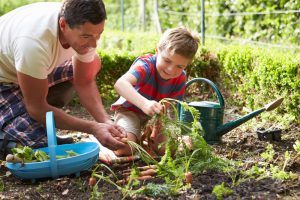
Gardening is a calming pastime, a time to get closer to nature. However, if you are moving to the coast of North Carolina from, say, the northeast, quite some ways away from the ocean, your gardening experience is going to be vastly different from what you’re used to. Different doesn’t mean bad. In fact, many gardeners in the coastal regions of North Carolina have created beautiful, successful gardens. You can too.
Stick with Mostly Low Lying Plants
In the garden of your previous home, you were probably used to designing with plants of all different heights. After all, doing so creates visual balance and interest. However, taller plants on the coast tend to get caught in coastal winds, and will suffer severe damage as a result. While you can use some taller trees or shrubs for privacy or interest, it is best to stick with plants that stay low to the ground. These will be easier to establish and thrive.
Plant in Large Groups
Plant similar plants in large groupings. Doing so will help to protect them from wind and salt damage. Whereas groups of plants that are different heights tend to catch the wind, and sustain significant damage, the wind will go up and over mass of plants that are of similar height.
Another reason to plant large groups of the same plant: it mimics the movement of the ocean waves, which helps your garden to fit perfectly with its surroundings. Just be sure to group your plants together as closely as possible while still giving them enough room to grow to maturity.
Spray Down Periodically
There are many types of plants out there that don’t like being sprayed down. However, plants living in the salty air of the coast can actually benefit from a shower every now and again. The bath prevents salt burns on foliage and removes excess salt from the dirt.
Treat Plants with Extra Love
Coastal conditions can be hard on plants, so they need to be treated with a bit of extra love and care. Plants are put through much more stress and moisture loss than plants in inland gardens. Without sufficient care, they would look rather pitiful. Make sure that you use plenty of compost in new beds to help sandy soil hold moisture and nutrients. Use natural fertilizers that will release slowly, so as not to overwhelm the plants. A nice, generous layer of wood mulch will also help to keep moisture in. And be sure to water regularly.
Once you have had a little practice with coastal gardening in North Carolina, it will seem like second nature to you. Looking for the perfect coastal North Carolina home to start your new gardening adventure? The homes at Porter’s Neck Plantation and Country Club provide you with a beautiful landscape that is sure to please. Call today to schedule your tour, and see why Porter’s Neck is the perfect place to call home.


